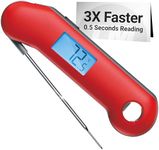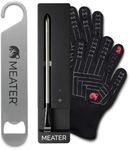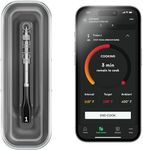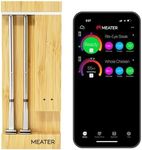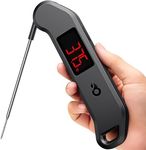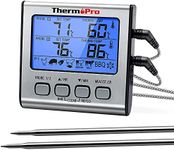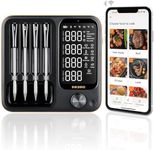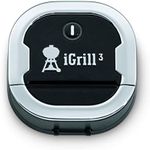Buying Guide for the Best Meat Thermometers
Choosing the right meat thermometer can make a significant difference in your cooking experience, ensuring that your meat is cooked to perfection and safe to eat. When selecting a meat thermometer, consider the type of cooking you do most often, the features that will be most useful to you, and how easy the thermometer is to use and read. Here are some key specifications to consider when picking a meat thermometer.Type of ThermometerMeat thermometers come in various types, including digital, analog, and infrared. Digital thermometers provide quick and accurate readings and often come with additional features like timers and alarms. Analog thermometers are simple and reliable but may take longer to read. Infrared thermometers measure surface temperature without contact, which is useful for grilling but not for internal meat temperature. Choose the type that best fits your cooking style and needs.
Temperature RangeThe temperature range of a meat thermometer indicates the minimum and maximum temperatures it can measure. This is important because different types of meat require different cooking temperatures. For example, poultry needs to reach at least 165°F, while beef can be cooked to various levels of doneness. Ensure the thermometer you choose covers the range you need for the types of meat you cook most often.
AccuracyAccuracy refers to how close the thermometer's reading is to the actual temperature. High accuracy is crucial for ensuring your meat is cooked safely and to your desired doneness. Look for thermometers with a small margin of error, typically within 1-2 degrees. If you frequently cook meat that requires precise temperatures, such as steaks or roasts, prioritize accuracy in your selection.
Response TimeResponse time is the amount of time it takes for the thermometer to display the temperature after being inserted into the meat. Faster response times are beneficial for quick checks and adjustments, especially when grilling or cooking multiple pieces of meat. Digital thermometers usually have faster response times compared to analog ones. If you value speed and efficiency in your cooking, opt for a thermometer with a quick response time.
Probe LengthThe probe length determines how deep the thermometer can be inserted into the meat. Longer probes are useful for larger cuts of meat, ensuring you can reach the center for an accurate reading. Shorter probes are sufficient for smaller cuts and are easier to handle. Consider the size of the meat you typically cook and choose a probe length that will allow you to measure the internal temperature effectively.
Ease of UseEase of use encompasses features like a clear display, intuitive controls, and comfortable handling. A thermometer that is easy to read and operate will make your cooking experience more enjoyable and less stressful. Look for features like backlit displays for low-light conditions, simple buttons, and ergonomic designs. If you often cook in dimly lit areas or prefer straightforward tools, prioritize ease of use in your selection.
DurabilityDurability refers to how well the thermometer can withstand regular use and potential drops or spills. A durable thermometer will last longer and provide reliable performance over time. Look for thermometers made from high-quality materials, such as stainless steel probes and sturdy casings. If you cook frequently or in busy environments, choose a thermometer known for its durability.
Additional FeaturesAdditional features can enhance the functionality of your meat thermometer. These may include preset temperature settings for different types of meat, alarms that notify you when the meat reaches the desired temperature, and wireless connectivity for remote monitoring. Consider which features will be most useful for your cooking habits. If you enjoy experimenting with different meats or need reminders, look for thermometers with these extra features.


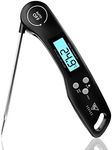
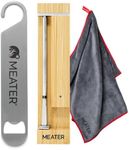
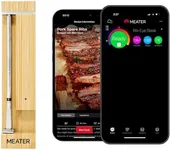
![MEATER Pro XL [New] - Smart WiFi Me](https://images-proxy.bestreviews.guide/tuyL0vgKj6tAqaVeguCpnYKa3bc=/0x150/https://m.media-amazon.com/images/I/41SUw4+eQDL._AC_CX679_.jpg)
